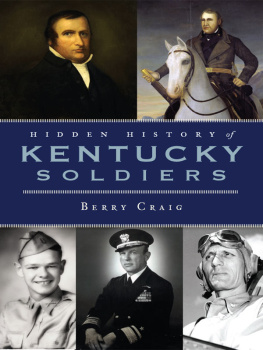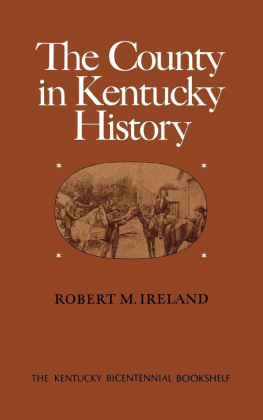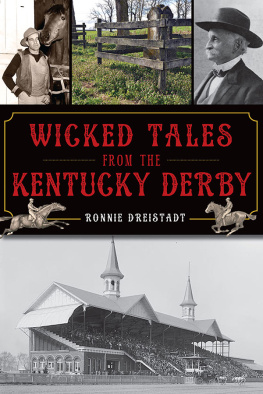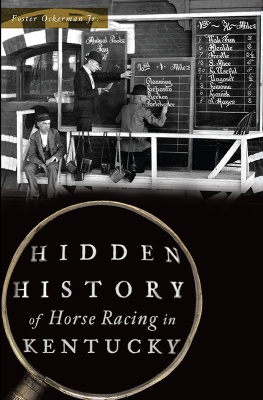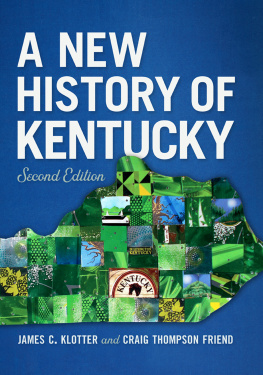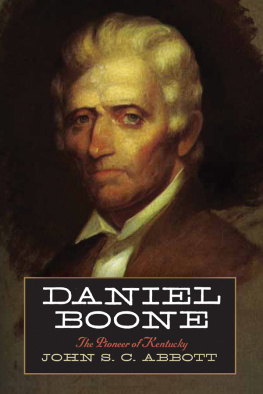

Published by The History Press
Charleston, SC 29403
www.historypress.net
Copyright 2011 by Berry Craig
All rights reserved
Front cover: Pictures of the William Whitley House, Daniel Boone and William Whitley appear courtesy of the Kentucky Historical Societs.
First published 2011
e-book edition 2013
Manufactured in the United States
ISBN 978.1.62584.181.0
Library of Congress Cataloging-in-Publication Data
Craig, Berry.
Hidden history of Kentucky soldiers / Berry Craig.
p. cm.
Includes bibliographical references.
print edition ISBN 978-1-59629-996-2
1. Kentucky--History, Military--18th century. 2. Kentucky--History, Military--19th century. 3. Kentucky--History, Military--20th century. 4. Soldiers--Kentucky--Biography. 5. Soldiers--Kentucky--History--18th century. 6. Soldiers--Kentucky--History--19th century. 7. Soldiers--Kentucky--History--20th century. I. Title.
F451.C79 2011
976.9--dc22
2010052602
Notice: The information in this book is true and complete to the best of our knowledge. It is offered without guarantee on the part of the author or The History Press. The author and The History Press disclaim all liability in connection with the use of this book.
All rights reserved. No part of this book may be reproduced or transmitted in any form whatsoever without prior written permission from the publisher except in the case of brief quotations embodied in critical articles and reviews.
To my father, Motor Machinists Mate First Class Berry F. Craig Jr., U.S. Navy, and late father-in-law, Master Sergeant Robert P. Hocker Jr., U.S. Armyboth combat veterans of the Pacific Theater in World War II and part of what Tom Brokaw called the Greatest Generation. Also, this book is dedicated to Ed Paxton, Karl Harrison, Jack Anderson, Preston Kennedy, Bob Sanderson and the rest of the gang at the old Paducah Sun-Democrat in 1976, when I was a cub reporter and first wrote about some of the heroes who are in this book.
CONTENTS
CHAPTER 1
THE FRENCH AND INDIAN WAR AND THE AMERICAN REVOLUTION
IT WAS NO MERE FROLICSOME PASTIME TO THE DRIVERS
Strictly speaking, Daniel Boone was not a soldier when he received his baptism of fire in the French and Indian War.
He was a British army contract employee, sort of like a Halliburton employee today, said James Tomasek, a ranger at Fort Necessity National Battlefield, near Farmington, Pennsylvania.
A twenty-year-old wagon driver, Boone barely escaped with his life in the one-sided backwoods battle of July 9, 1755, that went down in history as Braddocks Defeat. General Edward M. Braddock commanded a 2,400-man column of British regulars and Virginia and North Carolina militia that was nearly wiped out by a smaller force of French and French Canadian soldiers and Native Americans at what is now Braddock and North Braddock, Pennsylvania. The adjacent communities are near Pittsburgh, the site of French-held Fort Duquesne, Braddocks objective.
The general was mortally wounded in what was also called the Battle of the Monongahela. Approximately 900 of his 1,400 soldiers engaged were listed as killed or wounded. Enemy casualties were reportedly fewer than 100.
Boone was a Pennsylvania native. But he was living with his family in the Yadkin Valley of North Carolina when he signed up for army service. He might have been seeking adventure or, at least, relief from farming, which he found tedious.

Daniel Boone. Courtesy of the Kentucky Historical Society.
Boone accompanied the one hundred North Carolina troops under Captain Waddell, not as a soldier, but as a wagoner, conveying the baggage of the company, according to The Life of Daniel Boone, a book written by Lyman C. Draper and edited by Ted Franklin Belue. Boones job was hardly glamorous, the book says: It was no mere frolicsome pastime to the drivers. Their most unwearied care and patience were requisite in conducting the heavily laden baggage-wagons over hills and mountain, through streams, ravines, and quagmires.
Braddock expected to capture stonewalled, star-shaped, cannon-bristling Fort Duquesne, where the Allegheny and Monongahela Rivers converge to form the Ohiodowntown Pittsburgh today. Braddocks volunteer aide was another future famous American: Lieutenant Colonel George Washington of the Virginia militia.
From Cumberland, Maryland, Braddocks column crept northwestward. To accommodate his wheeled artillery, Braddocks engineers widened a narrow road Washington had built to Fort Necessity in 1754.
The French attacked Washington and forced him to surrender the tiny, log-walled backwoods bastion in a clearing called the Great Meadows. He gave up, coincidentally, on July 4, 1754. The French burned Fort Necessity and returned to Fort Duquesne.
Beyond Fort Necessity, Braddock blazed his own road through the dense forests and occasional clearings. To speed up the advance, he divided the column. Braddock headed the lead group of about 1,400 men, which included Boone. The rest trailed several miles behind.

Washington statue, Braddock, Pennsylvania. Courtesy of the author.
The terrain forced Braddock to ford the Monongahela River twice. Shortly after the second crossingabout eight miles from Fort Duquesnebetween three hundred and nine hundred French troops and Indian warriors collided with the forward British column. A small memorial park at the battle site in Braddock features a bronze statue of George Washington.
Repulsed, the French and Native Americans dashed into the woods and turned the tide. Hiding behind rocks and trees, they made short work of the redcoats, who stood up and fought European style. About 450 of Braddocks men were killed, and a like number were wounded.
After Braddock fell, the British regulars panicked, and the battle became a rout. Washington and the Virginia and North Carolina militia took cover and returned fire. But they, too, were forced to withdraw with the enemy in pursuit.
Meanwhile, Boone and the other wagoners waited anxiously in the rear. Ordered not to retreat when shooting started, the wagon drivers watched the regulars flee by them, Michael A. Lofaro wrote in The Life and Adventures of Daniel Boone.
Boone was about a half-mile from where the battle started, according to Daniel Boone: The Life and Legend of an American Pioneer, by John Mack Faragher. Officers hastened their companies forward, leaving a guard for the wagons. As they rushed against the stalled front, the entire army crushed together like an accordion. Chaos soon prevailed amid the rain of fire. In the rear, snipers began to take their toll.
Boone and the teamsters were ordered to stay put and hold their horses at the ready for advancing to the front.
Faragher wrote:
But with balls whistling past their heads, many of them cut their horses from the wagons and galloped away during the first minutes of the battleAccording to Boone, he remained. Nowhere could the enemy be seen, only the bursts of their rifle fire amid the trees and the men dropping like Leaves in Autumn, as one British officer later remembered
Next page
